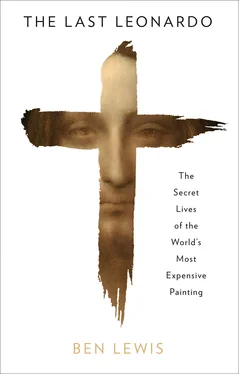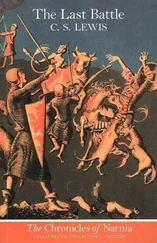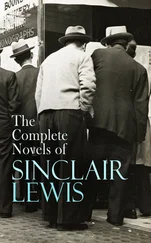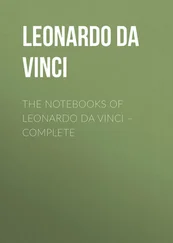The basic laws of perspective, the representation of three-dimensional space on two dimensions, mostly forgotten since Antiquity, had been revived in frescos decorating chapels by artists Masolino and Masaccio, and in diagrams and text by the architect and humanist Leon Battista Alberti. All these developments were so remarkable that, a century later, they prompted the first ever art history book, Vasari’s Lives of the most Excellent Painters, Sculptors and Architects , to give it its full title. This account of Italian art from the fourteenth to the sixteenth century distinguished between three phases in Renaissance art – early, middle and high – categories which are still widely accepted today. Vasari placed Leonardo at the start of ‘the third manner which we will agree to call the modern’.* Today this period is known as the High Renaissance.
Leonardo’s father was a friend of one of the busiest artists in Florence, Andrea Verrocchio. He ran a large workshop in premises previously occupied by the greatest Florentine Renaissance sculptor from the preceding generation, Donatello, showing how the baton of the Renaissance was handed down from one leading artist to the next. A team of assistants helped Verrocchio execute a mixture of large-scale commissions, statues, jewellery and small workshop paintings, which could be bought by customers coming in off the street. Leonardo had shown early ability with drawing, and his father took him into Florence to see Verrocchio. He was taken on as an apprentice in his mid-teens, around 1469.
Already by his early twenties, Leonardo’s style was so distinctive that art historians argue over which parts of Verrocchio’s paintings might be by the master and which by his precocious pupil. There is a deliciously shiny fish and an alert, fluffy dog in Verrocchio’s Tobias and the Angel (1470–75) which are sometimes attributed to Leonardo. The angel on the far left of Verrocchio’s Baptism of Christ , with his demure and elliptical expression, that tiny knowing smile and hint of gender fluidity, is said to be by Leonardo. In the background, a vast panorama of rolling hills, lakes and steep mountains unfolds, strikingly different from Verrocchio’s well-tended lawns, gentle slopes and neatly pruned trees. Another tell-tale sign is that this background is painted in oil. Leonardo liked to use the new medium of oil paint, which had arrived recently from the Netherlands, while Verrocchio used the old medium of tempera, based on egg yolk, so parts of his paintings finely executed in oils are generally thought to be by Leonardo.
In 1478 Leonardo left Verrocchio’s workshop and set up his own practice in Florence. His first major commission, from an order of Augustinian monks, the Adoration of the Magi , now hangs in the Uffizi. It was a breathtakingly inventive work for its time in how it set aside the conventional, flat depiction of this scene and instead offered a sweeping arabesque of a procession, which curves from the distance to the foreground, suggesting the passage of time and a distance travelled. The wise kings and their entourage gather in a semi-circle around the Madonna and child, evoking a deep foreground space. The recently restored Adoration shows the artist’s underdrawing, a dense web of constantly altered figures, gestures and details, which point to yet another distinctive characteristic of Leonardo: a striving imagination which altered his compositions with a freedom unknown to his contemporaries. The painting was never finished.
In Florence, Leonardo painted a dynamic and beautifully proportioned Annunciation , in which one finds his obsession with naturalistic detail in the flowery lawn and marble table. Close-up photographic study of the painting has also revealed the artist’s fingerprints, another distinguishing feature of his work. Leonardo had, it seems, an idiosyncratic way of occasionally using his fingers and palms to work the paint. At this time he also painted his first known portrait, of Ginevra de’ Benci . The painting’s realism, its glossy oil-painted sheen and austere atmosphere of introspection, show the huge impact on Leonardo of northern European Renaissance painters, whose fame had spread to Italy. In the St Jerome , which never went beyond the design stage, Leonardo conveys the suffering of the saint in the wilderness by his meticulous depiction of an undernourished anatomy. Leonardo’s drawings were as epoch-making as his paintings. On 5 August 1473 he drew in pen and ink what Martin Kemp has described as ‘simply the first dated landscape study in the history of Western art’ 1– a view of the Arno valley showing Montelupo Castle, just outside Florence.
Around 1482, Leonardo left Florence to begin the second phase of his professional life in Milan, not for the last time reneging on his contractual obligations to finish paintings when he saw the opportunity for a step up the professional ladder. The new Milanese ruler, Duke Ludovico Sforza, had consolidated his power after defeating the French army and poisoning his nephew. Now, like many a newly established despot before and since, he turned to culture as a tool of statecraft (today this is called ‘art washing’). Sforza wished to make Milan a northern city to rival Florence, but Leonardo appears not to have been aware of the duke’s new priorities. There is a draft of a letter to him in the notebooks in which Leonardo – a man on the make as well as a genius – seeks to reinvent himself as an engineer. He pitches hard that he could make ‘all kinds of mortars, most convenient and easy to carry, and with these I can fling small stones almost resembling a storm’. He could dig tunnels under rivers, make ‘safe and invincible’ chariots, ‘big guns’ and catapults, and lastly – change of subject – ‘I can carry out sculpture in marble, bronze, or clay, and also I can do in painting whatever may be done.’ It was these last two talents that the duke would principally avail himself of.
At the time, Milan was a cultural backwater. The most popular local painters, Vincenzo Foppa, Bernardo Zenale and Ambrogio Bergognone, had barely left the Middle Ages, stylistically speaking. Their workshops were busy but the output uninventive. Thick halos of gold leaf encircled the heads of their saints, who stood stiffly in their heavy robes. Their complexions were pallid and their facial expressions dour and portentous. A wonky perspective in the depiction of a throne, canopy or manger in the foreground usually jarred with that of the architecture or landscape behind. By comparison, Leonardo was the avant-garde with his anatomical and botanical precision, his developing subtle tonality (aka sfumato ) and his grip on storytelling.
Leonardo’s first commission in Milan was the most enigmatic painting of his entire oeuvre, the Virgin of the Rocks which now hangs in the Louvre (the National Gallery in London has a second, later version of the painting). Once again the traditional format for such paintings, in which the Virgin and child are seated on a throne on a podium, with saints on either side, has been unceremoniously discarded. Instead, the mother and child appear to have taken refuge in a mountain cave, along with a baby St John, who prays to Jesus, though the Bible never suggests that they met at this age. The group are perched on the edge of a rocky chasm which falls away in front of us, creating a gulf between the viewer and subject. The bizarre landscape of rocky pillars recalls the Surrealist paintings of Max Ernst four and a half centuries later. The painting is the epitome of the sophisticated but indecipherable symbology which Leonardo inserted into his compositions. The lake in the background on the left may symbolise the purity of the Virgin, and so may the foreground, since Mary is referred to in the Song of Songs as ‘the cave in the mountain’. Alternatively, the inhospitable terrain could refer to medieval biographies of St John the Baptist or St Francis, while the manner in which the entire rocky backdrop echoes the arrangement of holy figures could embody the belief, widespread in the Middle Ages and shared by Leonardo, that the earth with its land and water functioned much like the human body with its flesh and blood. Art historians have discussed the meaning of this painting for centuries, without reaching any degree of certainty or agreement.
Читать дальше












